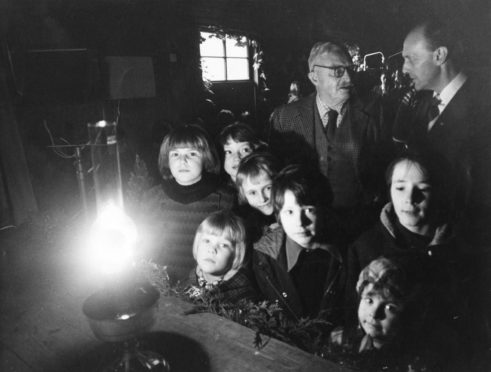Promises and pledges come thick and fast as December’s general election approaches.
Since even an election’s winners can’t be held to campaign undertakings, much of what’s currently on offer from politicians is unlikely to become government policy anytime soon. But from a rural perspective in particular, there’s one proposal that, irrespective of who takes charge next month, needs keeping clearly in view.
This proposal comes from Labour. It commits the party to making full-fibre broadband available, free of charge, to every home and business in the UK within ten years – a development, Labour say, that would put Britain ‘at the cutting edge of social and economic change’.
That the UK’s lagging far behind in this regard is clear. In South Korea, 98 out of every 100 homes already have access to full-fibre broadband. In Portugal, the corresponding figure is 89. In Spain it’s 71. But in Britain it’s just eight.
Nor is this just about the ability to download an entire movie from the internet in only a few seconds. It’s about ensuring that everyone everywhere – companies, community groups, families, individuals – has equal access to the fullest possible range of internet-based services and opportunities.
Labour contends that no commercial concern can or will deliver this sort of provision to the country in its entirety. And there’s likely to be sympathy for that view from anyone who’s ever grappled with ‘remote area delivery surcharges’ and all the other additional costs that private sector service providers impose on customers in places like the Highlands and Islands. The upfront costs of full-fibre broadband installation are unavoidably high. In towns and cities, these costs can be recouped from easily accessed concentrations of customers. In rural areas, however, installation costs rise steeply with distance – while customers are, by definition, far, far fewer.
To leave full-fibre broadband provision entirely to the private sector, then, is to guarantee that rural areas, especially harder to access rural areas, will be left unprovided for – with the result that those areas, already disadvantaged in all sorts of other ways, will become more disadvantaged still.
In a north of Scotland context, as it happens, we’ve been here before. And in relation to a service that’s even more basic than broadband. This being mains electricity.
When, in the 1920s and 1930s, private companies were entirely in charge of connecting UK homes and businesses to what was then a rudimentary distribution network, those companies concentrated, for much the same reason as full-fibre broadband providers do today, on urban localities where wiring-up costs were comparatively low and customers most numerous.
Homes across much of the Scottish north, it followed, had no mains electricity and next to no prospect of getting any. Until, that is, the creation in 1943 of the North of Scotland Hydro-Electric Board. The brainchild of leading Labour politician Tom Johnston, secretary of state for Scotland in Winston Churchill’s wartime coalition, the Hydro Board was modelled on the Tennessee Valley Authority. Put in place to deliver hydro-electricity to one of the more run-down and poverty-stricken parts of the United States, the TVA was a key component of President Franklin D Roosevelt’s New Deal – the means by which Roosevelt deployed US state power to turn around a country reeling from the mass unemployment brought about by the 1929 Wall Street crash.
His Hydro Board, Tom Johnston believed, could do for the north of Scotland in general, and for the Highlands and Islands in particular, what Roosevelt’s TVA had done for a big slice of rural America. Government-financed dams and power stations would harness the generating potential of the north’s rivers – while a state-funded network of poles, pylons and overhead cabling would convey the resulting electricity to even the most thinly populated and most distant communities.
So committed was Johnston to this vision that, at the war’s end in 1945, he left Westminster to become Hydro Board chairman. Thus it came about that it’s to Johnston and the Hydro Board that I owe one of my earliest memories – a memory of my father coming home from work one evening in the early 1950s to be greeted by my sister and I flicking the switch that, for the first time, filled our West Highland kitchen with what, for ages, we called ‘electric light’.
But it’s not so much for sentimental reasons as from a wider appreciation of the Hydro Board’s huge contribution to Highlands and Islands development that I’m in agreement with Labour’s broadband case. When it comes to ensuring that an essential service (and broadband’s now such a service) is available to all, a state agency, as the Hydro Board record shows, can overcome distribution difficulties in ways the private sector can’t.
Prime Minister Boris Johnson isn’t impressed by Labour’s commitment to turn Openreach, BT’s infrastructure division, into a state-owned company called British Broadband. This, the PM says, is a ‘crazed communist scheme’. Well, perhaps. But just as it took the Hydro Board to get electricity to north of Scotland householders who might otherwise have been left for a long time without it, so it could well take another state-run enterprise to do the same for full-fibre broadband.
Jim Hunter is a historian, award-winning author and Emeritus Professor of History at the University of the Highlands and Islands











